Ivan Andonovic
On Models and Approaches for Human Vital Signs Extraction from Short Range Radar Signals
Apr 15, 2024



Abstract:The paper centres on an assessment of the modelling approaches for the processing of signals in CW and FMCW radar-based systems for the detection of vital signs. It is shown that the use of the widely adopted phase extraction method, which relies on the approximation of the target as a single point scatterer, has limitations in respect of the simultaneous estimation of both respiratory and heart rates. A method based on a velocity spectrum is proposed as an alternative with the ability to treat a wider range of application scenarios.
Non-invasive Diver Respiration Rate Monitoring in Hyperbaric Lifeboat Environments using Short-Range Radar
Apr 15, 2024Abstract:The monitoring of diver health during emergency events is crucial to ensuring the safety of personnel. A non-invasive system continuously providing a measure of the respiration rate of individual divers is exceedingly beneficial in this context. The paper reports on the application of short-range radar to record the respiration rate of divers within hyperbaric lifeboat environments. Results demonstrate that the respiratory motion can be extracted from the radar return signal applying routine signal processing. Further, evidence is provided that the radar-based approach yields a more accurate measure of respiration rate than an audio signal from a headset microphone. The system promotes an improvement in evacuation protocols under critical operational scenarios.
Interference Motion Removal for Doppler Radar Vital Sign Detection Using Variational Encoder-Decoder Neural Network
Apr 12, 2024



Abstract:The treatment of interfering motion contributions remains one of the key challenges in the domain of radar-based vital sign monitoring. Removal of the interference to extract the vital sign contributions is demanding due to overlapping Doppler bands, the complex structure of the interference motions and significant variations in the power levels of their contributions. A novel approach to the removal of interference through the use of a probabilistic deep learning model is presented. Results show that a convolutional encoder-decoder neural network with a variational objective is capable of learning a meaningful representation space of vital sign Doppler-time distribution facilitating their extraction from a mixture signal. The approach is tested on semi-experimental data containing real vital sign signatures and simulated returns from interfering body motions. The application of the proposed network enhances the extraction of the micro-Doppler frequency corresponding to the respiration rate is demonstrated.
A Novel Micro-Doppler Coherence Loss for Deep Learning Radar Applications
Apr 12, 2024Abstract:Deep learning techniques are subject to increasing adoption for a wide range of micro-Doppler applications, where predictions need to be made based on time-frequency signal representations. Most, if not all, of the reported applications focus on translating an existing deep learning framework to this new domain with no adjustment made to the objective function. This practice results in a missed opportunity to encourage the model to prioritize features that are particularly relevant for micro-Doppler applications. Thus the paper introduces a micro-Doppler coherence loss, minimized when the normalized power of micro-Doppler oscillatory components between input and output is matched. The experiments conducted on real data show that the application of the introduced loss results in models more resilient to noise.
Neural Weight Step Video Compression
Dec 02, 2021
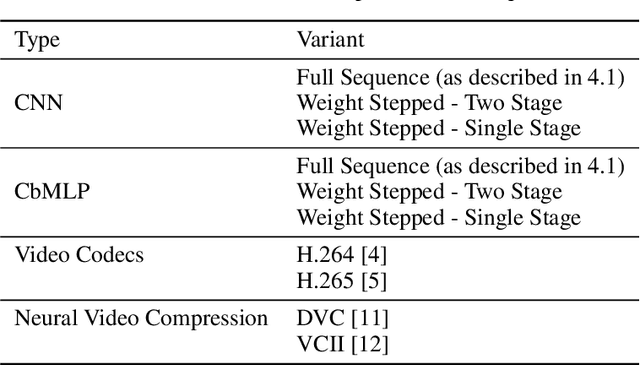
Abstract:A variety of compression methods based on encoding images as weights of a neural network have been recently proposed. Yet, the potential of similar approaches for video compression remains unexplored. In this work, we suggest a set of experiments for testing the feasibility of compressing video using two architectural paradigms, coordinate-based MLP (CbMLP) and convolutional network. Furthermore, we propose a novel technique of neural weight stepping, where subsequent frames of a video are encoded as low-entropy parameter updates. To assess the feasibility of the considered approaches, we will test the video compression performance on several high-resolution video datasets and compare against existing conventional and neural compression techniques.
Neural Knitworks: Patched Neural Implicit Representation Networks
Sep 29, 2021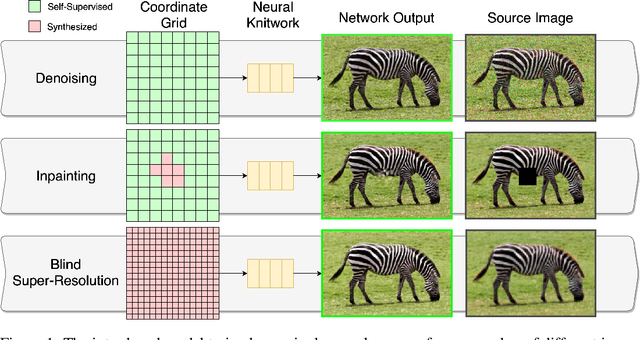
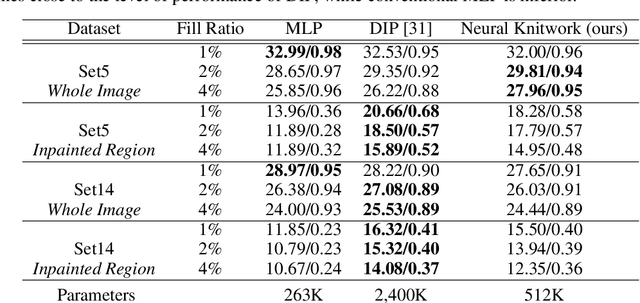

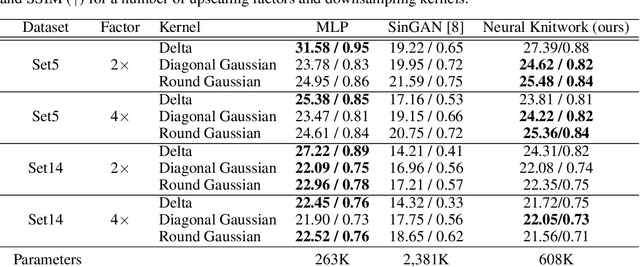
Abstract:Coordinate-based Multilayer Perceptron (MLP) networks, despite being capable of learning neural implicit representations, are not performant for internal image synthesis applications. Convolutional Neural Networks (CNNs) are typically used instead for a variety of internal generative tasks, at the cost of a larger model. We propose Neural Knitwork, an architecture for neural implicit representation learning of natural images that achieves image synthesis by optimizing the distribution of image patches in an adversarial manner and by enforcing consistency between the patch predictions. To the best of our knowledge, this is the first implementation of a coordinate-based MLP tailored for synthesis tasks such as image inpainting, super-resolution, and denoising. We demonstrate the utility of the proposed technique by training on these three tasks. The results show that modeling natural images using patches, rather than pixels, produces results of higher fidelity. The resulting model requires 80% fewer parameters than alternative CNN-based solutions while achieving comparable performance and training time.
Leveraging Siamese Networks for One-Shot Intrusion Detection Model
Jun 27, 2020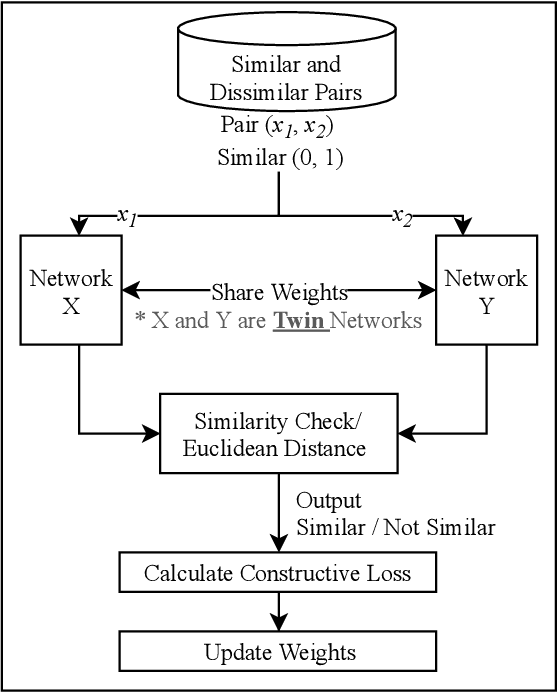
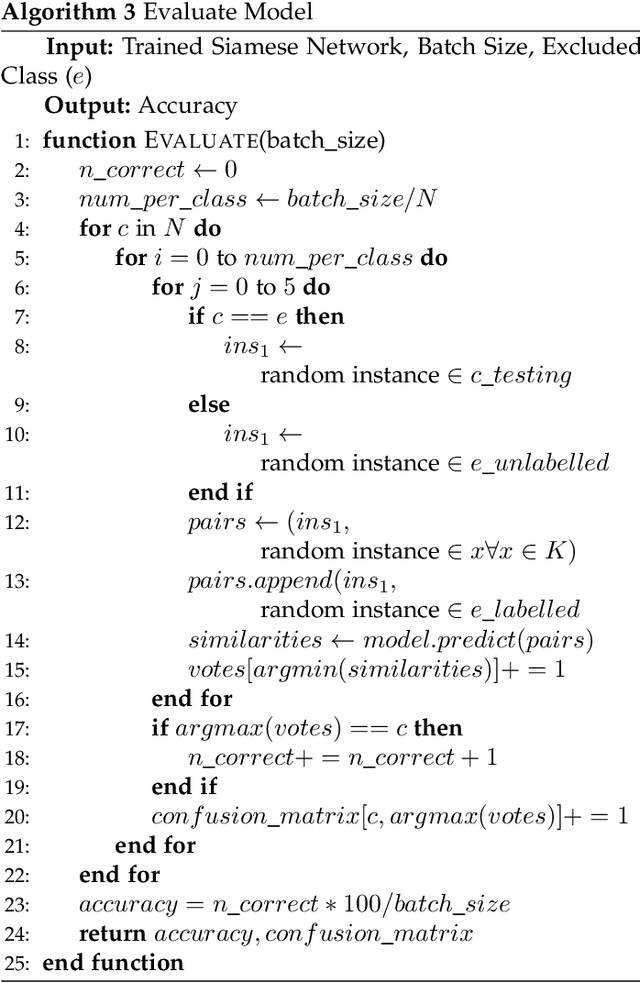
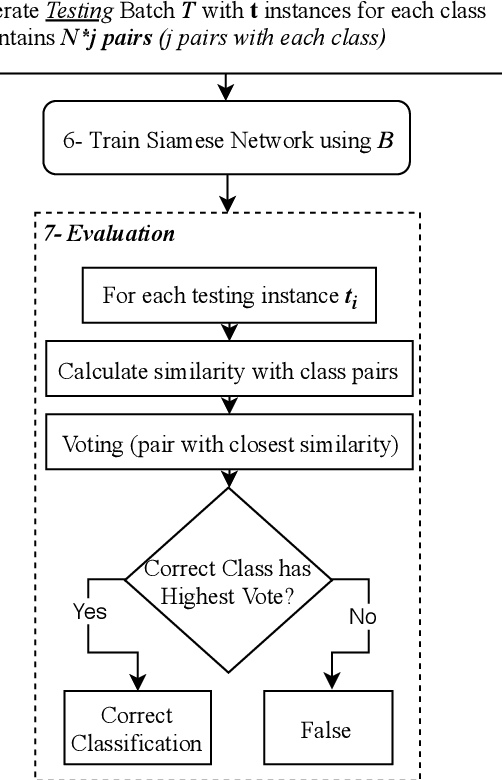
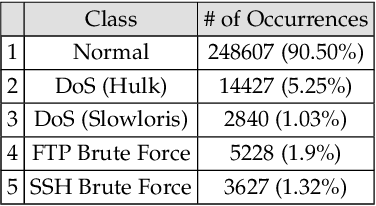
Abstract:The use of supervised Machine Learning (ML) to enhance Intrusion Detection Systems has been the subject of significant research. Supervised ML is based upon learning by example, demanding significant volumes of representative instances for effective training and the need to re-train the model for every unseen cyber-attack class. However, retraining the models in-situ renders the network susceptible to attacks owing to the time-window required to acquire a sufficient volume of data. Although anomaly detection systems provide a coarse-grained defence against unseen attacks, these approaches are significantly less accurate and suffer from high false-positive rates. Here, a complementary approach referred to as 'One-Shot Learning', whereby a limited number of examples of a new attack-class is used to identify a new attack-class (out of many) is detailed. The model grants a new cyber-attack classification without retraining. A Siamese Network is trained to differentiate between classes based on pairs similarities, rather than features, allowing to identify new and previously unseen attacks. The performance of a pre-trained model to classify attack-classes based only on one example is evaluated using three datasets. Results confirm the adaptability of the model in classifying unseen attacks and the trade-off between performance and the need for distinctive class representation.
 Add to Chrome
Add to Chrome Add to Firefox
Add to Firefox Add to Edge
Add to Edge